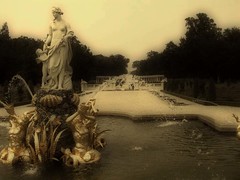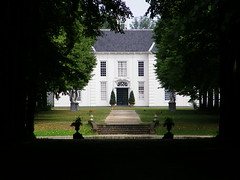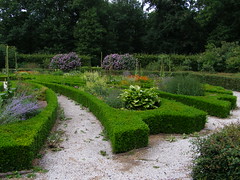The Cascade weblog presents a picture of the latest discovery concerning Paleis Het Loo in Apeldoorn: a previously unknown design for its gardens. The design is dated 1706 and made by T. Henry Reetz (1680-1765), “königlich preußischen und kurhannoverschen Hofarchitekten” in Berlin.
At the time, Reetz worked for one of the people who unsuccessfully claimed rights to the Dutch throne after William III died in 1702 (thus ending the dynasty of part of the Nassau family): Frederick I, King of Prussia.
Reetz also drew designs for three other Dutch palace gardens Frederick had set his eyes on. The designs must be seen as a serious preparation for his rise to the throne. It must also have been one of the first serious projects for the young architect -of which I know next to nothing: even Thieme-Becker does not mention his name.
Cascade’s next bulletin (2006-2) will feature a complete article about these discoveries, written by the curator of Het Loo’s gardens: Ben Groen.







